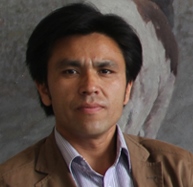
Memetjan Abla, a painter, teacher, husband and father, known for his subtle use of color in his elegant portraits of Uyghur urban life, was lost on Malaysia Airlines Flight MH370 from Kuala Lumpur to Beijing. He was 35.
As the New York Times reported in moving detail, he will be missed:
Among the many others in Beijing waiting for word were the wife and 10-year-old daughter of Maimaitijiang Abula, an ethnic Uighur painter and art teacher from the desert oasis town of Kashgar. The family had been living in Beijing for the past two years while Mr. Abula, 35, studied here at the Chinese Academy of Oil Painting. He was traveling in the group of more than 20 Chinese calligraphers and painters honored at an exhibition at the Malaysian Oriental Arts Center in Kuala Lumpur.
“She just can’t accept it,” a friend, Ku’erbanjiang Saimaiti, said on Sunday of Mr. Abula’s wife. “There’s no information at all at this moment.”
Mr. Abula was proud of his hometown, in the far west, and had done interpretation there for a state television film crew led by Mr. Saimaiti when they were shooting a documentary in 2010. Mr. Abula had joined the Chinese Communist Party and was often teased for it by friends. But he insisted he did not want to become an official, Mr. Saimaiti said, and he was “a responsible and kind artist.”
Although Memtjan has passed on, his art lives on in the present.
His Streets
Memetjan painted Xinjiang street scenes and Uyghur faces with the kind of intimacy that comes only from living in that world. One can recognize that he was a great painter by his touch: powerful, delicate, living –lines full of energy. But one also sees in his work an openness to the senses, a sensitivity open to the rhythms and music of the street. By rhythms, I mean that Memetjan helps us see the way the material forms of Uyghur worlds channel bodies in particular ways. Tarps, streets, carts, trees, dust, and noise coalesce into market scenes where place takes place.
But these views of the energy in the Uyghur lifeworld was not enough for Memetjan. Whether drawn from his peripheral vision as an artist or his intimacy with Uyghur livelihoods, Memetjan also pointed us toward the shadows and corners of the street where feelings of belonging and waiting are experienced.
His People
Memetjan’s portraits were intimate. He was imaging people who were uncomfortable in their pose. They were not accustomed to the recognition of an artist’s eye. They look to the side or straight ahead, but they do not perform the masculine or feminine gestures of strength or passivity. These models are models of friendship, of colleagues; familiar bodies clothed in stripes favored by young Uyghur men. It is hard to tell if there is a shy honesty in these figures, or if they are just tired.
His Time
In “Outlook” Memetjan introduces a feeling of the gaze — of Uyghur figures gazing at the changing world around them. The hardness of the old towns they have known as permanent was succumbing to the soft colors of new glass and steel; the effervesce of streets under the temporary shade of tarps and trees was being replaced by the distance of machines at work. The horizon was expanded — a slate grey — forever; time seemed to stop.
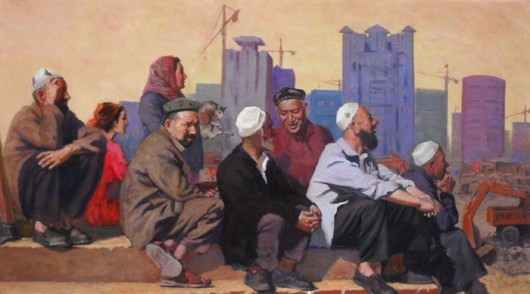
Outlook (coincidentally, this painting was used as the lead image in our previous dispatch)
But in the spaces away from the bustle of development, a different sense of time still took place. Dusk still happened uninterrupted by incandescence and electricity. Life still followed older rhythms. These quiet moments were what Uyghur livelihoods were built around. Memetjan allowed us to see this, if just for a moment. I didn’t know him, but through his pictures I feel as though I can see pieces of his world.
For more of Memetjan’s work, visit his website.
Beige Wind runs the website The Art of Life in Chinese Central Asia, which attempts to recognize and create dialogue around the ways minority people create a durable existence, and, in turn, how these voices from the margins implicate all of us in simultaneously distinctive and connected ways.

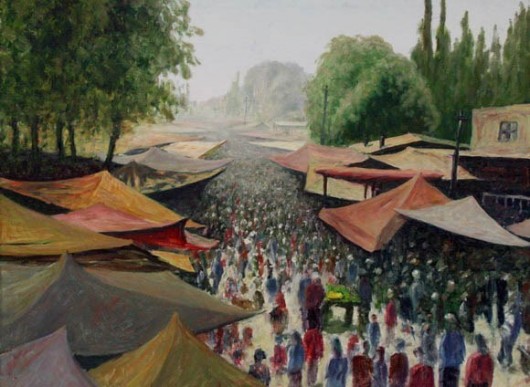
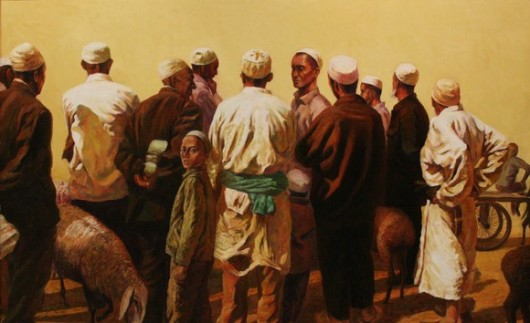


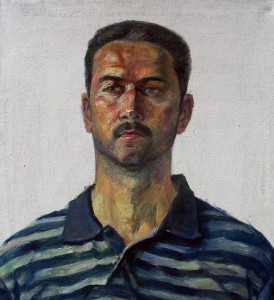
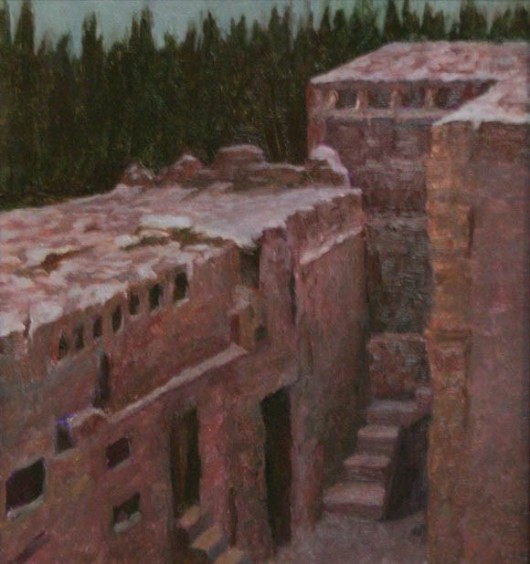
















































Thank you for posting this. I’m ticked off by the news outlets that are insisting on making this some sort of story…”police are investigating this Uyghur man”…of course, they’re investigating EVERYBODY on that plane.